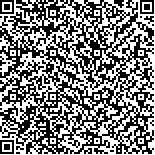| 本文已被:浏览 1528次 下载 1204次 |

码上扫一扫! |
| 放射性125I粒子植入治疗胸腺肿瘤胸膜复发的短期临床疗效 |
| 朱衍菲1△,王常禄2△,朱绫琳1,吉永烁1,朱君秋1,赵洪1,张宇1* |
|
|
(1. 复旦大学附属华东医院肿瘤科, 上海 200040;
2. 上海交通大学附属胸科医院放疗科, 上海 200030
△共同第一作者
*通信作者) |
|
| 摘要: |
| 目的 探讨放射性125I粒子植入治疗胸腺肿瘤复发患者的短期临床疗效。方法 收集2016年9月至2017年6月于复旦大学附属华东医院行放射性125I粒子植入的胸腺肿瘤患者资料。纳入标准:局部胸膜复发病灶;不能耐受系统化学治疗,或既往化学治疗失败;先前接受过胸部高剂量放射治疗;凝血功能正常。术前行胸部计算机断层扫描(CT)、超声、正电子发射断层显像-计算机断层扫描(PET-CT)等检查,依据放射治疗计划系统(TPS)制定治疗计划,在CT或超声引导下于穿刺点进针,插植粒子针,间距一般为0.5 cm。观察2个月后治疗病灶的临床疗效和不良反应,并随访3~9个月。结果 全组共13例患者行放射性125I粒子植入术,男7例、女6例,年龄30~78岁。植入粒子数中位数为30粒,范围为20~58粒;总剂量中位数为1.9×107 Bq,范围为(1.5~2.6)×107 Bq。随访2个月后发现客观缓解率达到100%(7例完全缓解,6例部分缓解),伴有胸壁疼痛的4例患者症状均得到缓解。1例患者在粒子植入过程中发生气胸。在3~9个月的随访过程中,没有患者出现粒子植入部位的疾病进展。结论 放射性125I粒子植入治疗胸腺肿瘤患者胸膜复发安全、有效,可作为传统放射治疗和化学治疗失败后的挽救性治疗,但其长期疗效有待进一步观察。 |
| 关键词: 胸腺肿瘤 125I粒子植入 胸膜 肿瘤复发 |
| DOI:10.16781/j.0258-879x.2018.10.1128 |
| 投稿时间:2018-05-07修订日期:2018-08-02 |
| 基金项目: |
|
| Short-term clinical efficacy of radioactive 125I seed implantation in treatment of pleural recurrence of thymoma |
| ZHU Yan-fei1△,WANG Chang-lu2△,ZHU Ling-lin1,JI Yong-shuo1,ZHU Jun-qiu1,ZHAO Hong1,ZHANG Yu1* |
(1. Department of Oncology, Huadong Hospital Affiliated to Fudan University, Shanghai 200040, China;
2. Department of Radiation Oncology, Shanghai Chest Hospital, Shanghai Jiao Tong University, Shanghai 200030, China
△Co-first authors.
* Corresponding author) |
| Abstract: |
| Objective To investigate the short-term clinical efficacy of radioactive 125I seed implantation in the treatment of patients with thymoma recurrence. Methods Clinical data of patients with thymoma, who underwent radioactive 125I seed implantation in Huadong Hospital of Fudan University during Sep. 2016 and Jun. 2017, were retrospectively collected. Inclusion criteria:local pleural recurrence lesions; intolerable to systemic chemotherapy or failure in previous chemotherapy; previously received high-dose chest radiotherapy; and normal coagulation function. All the patients were examined by computed tomography (CT), ultrasound and positron emission tomography-computed tomography (PET-CT) before operation. According to the Radiotherapy Planning System (TPS), the patients were inserted with the particle needles at the puncture point under the guidance of CT or ultrasound, and the distance between the sources was generally 0.5 cm. The clinical efficacy and adverse reactions were observed at 2 months after treatment. The patients were followed up for 3-9 months. Results A total of 13 patients underwent radioactive 125I seed implantation, aged from 30 to 78 years, with 7 males and 6 females. The median number of implanted particles was 30, ranging from 20 to 58; the median dose of the particles was 1.9×107 Bq, and the range was (1.5-2.6)×107 Bq. The objective response rate was 100% (7 cases in complete remission and 6 in partial remission) after 2 months of follow-up, and all the 4 patients with chest wall pain were relieved. Pneumothorax occurred in 1 patient during particle implantation. During 3 to 9 months of follow-up, no patient developed disease progression at the site of particle implantation. Conclusion Radioactive 125I seed implantation is a safe and effective method in the treatment of pleural recurrence of patients with thymoma, and can be used as a salvage therapy after the failure of traditional radiotherapy and chemotherapy, but its long-term effect needs further observation. |
| Key words: thymus neoplasms 125I implantation pleura neoplasm recurrence |
.jpg)
.jpg)